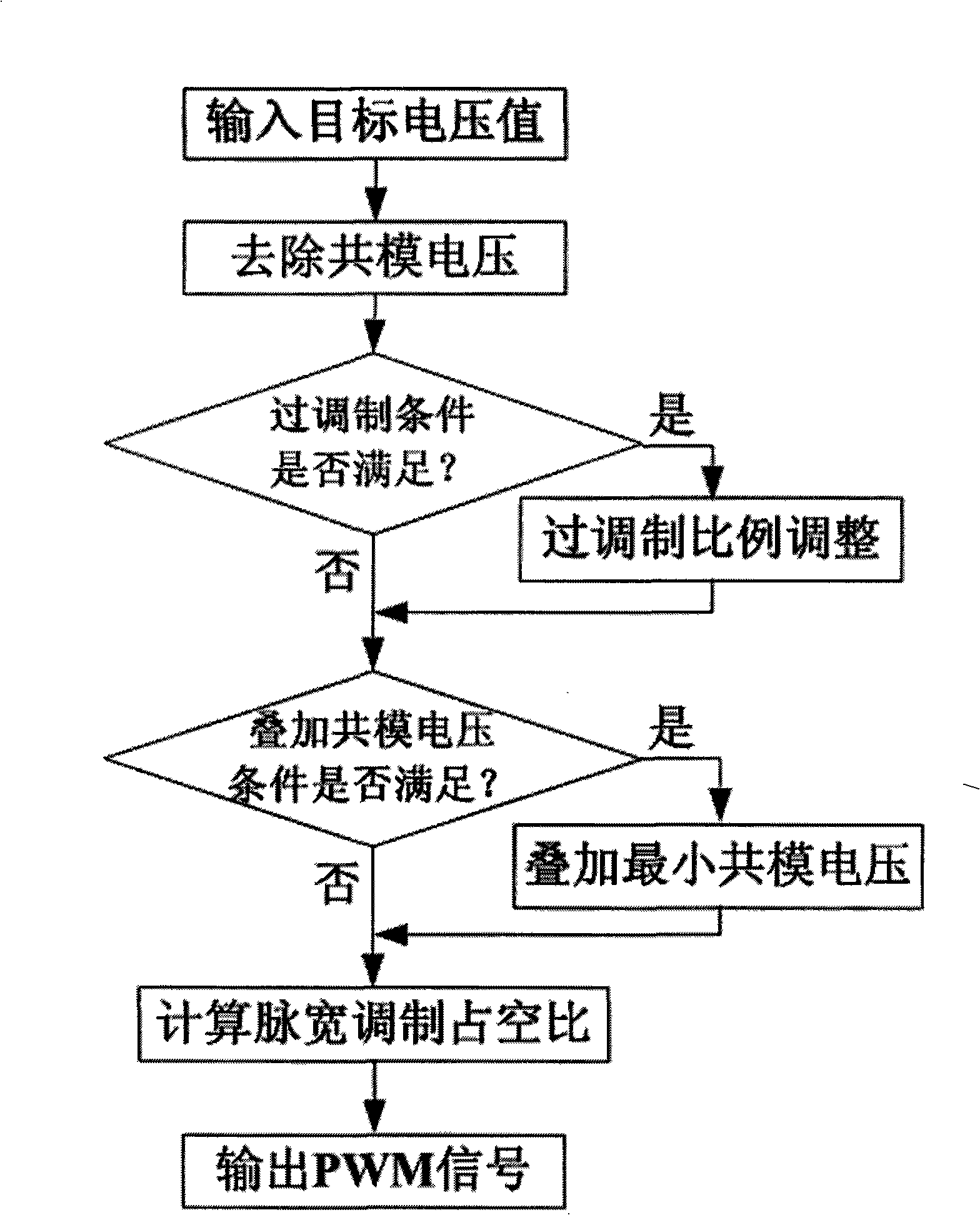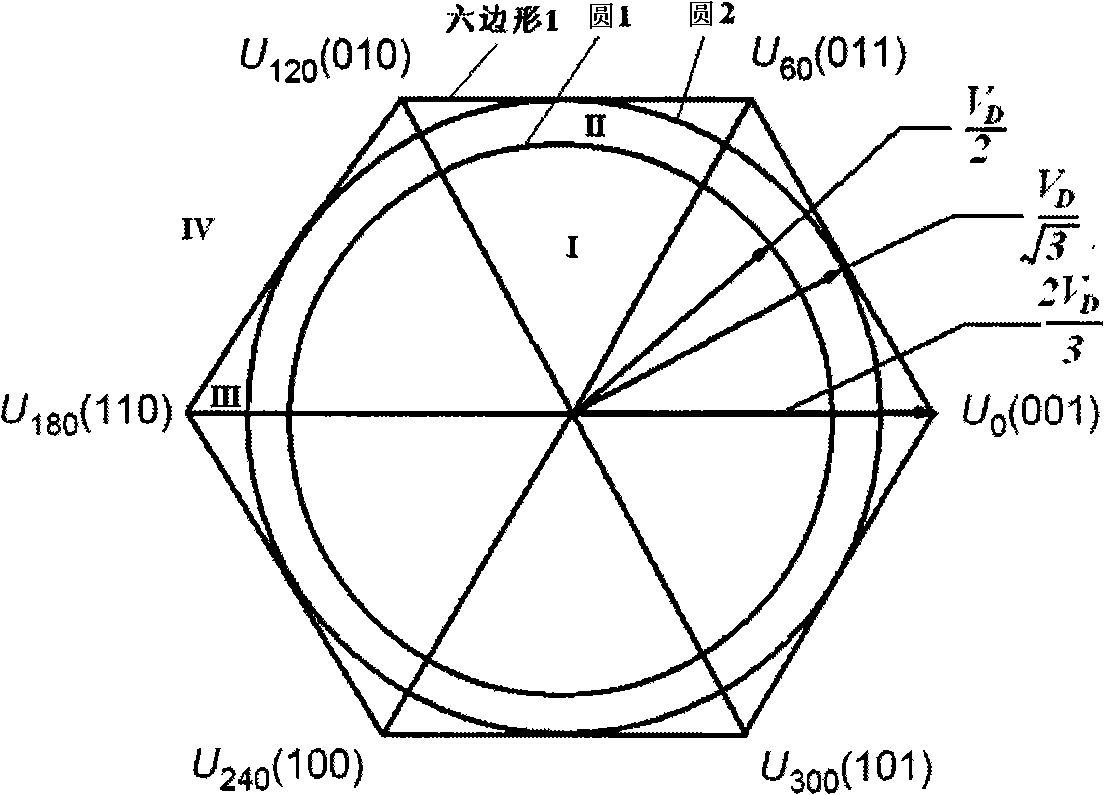Pulse width modulation method based on minimum common mode transient voltage superimposed
A technology of common-mode voltage and pulse width modulation, applied in the direction of AC motor control, electrical components, control systems, etc., can solve problems such as large common-mode voltage, inability to directly obtain modulation signals, and increased complexity
- Summary
- Abstract
- Description
- Claims
- Application Information
AI Technical Summary
Problems solved by technology
Method used
Image
Examples
Embodiment Construction
[0063] The present invention proposes a new type of pulse width modulation method, which is characterized in that the method can give the power unit by directly analyzing and calculating the target voltage value of each phase according to the limit condition of the output voltage state of the voltage source inverter device. control signal. The following takes a typical three-phase inverter system as an example to illustrate its working principle. as attached Figure 4 In the three-phase inverter circuit shown, the DC bus voltage is V D , select the DC bus voltage of As the reference voltage zero point, the attached Figure 4 Midpoint O. Using pulse width modulation methods such as SPWM or SVPWM to control the power switch T 1 ~T 6 Modulation control can output controlled AC voltage at A, B, and C terminals.
[0064] The present invention directly provides the target value of each phase voltage according to the physical limitation of the output state of the inverter dev...
PUM
 Login to View More
Login to View More Abstract
Description
Claims
Application Information
 Login to View More
Login to View More - R&D Engineer
- R&D Manager
- IP Professional
- Industry Leading Data Capabilities
- Powerful AI technology
- Patent DNA Extraction
Browse by: Latest US Patents, China's latest patents, Technical Efficacy Thesaurus, Application Domain, Technology Topic, Popular Technical Reports.
© 2024 PatSnap. All rights reserved.Legal|Privacy policy|Modern Slavery Act Transparency Statement|Sitemap|About US| Contact US: help@patsnap.com










